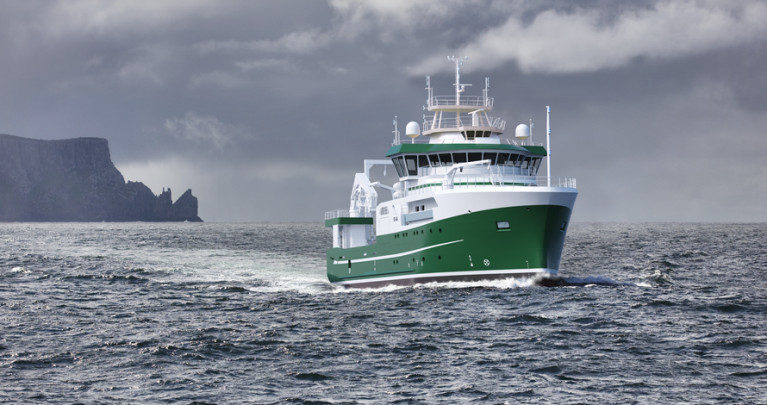Displaying items by tag: Laboratories
Functions of the RV Tom Crean from the Science Labs to A 'Drop' Keel
The level of interest on the Marine Institute's €25m newbuild RV Tom Crean is most encouraging and so Afloat continues with further details of the ship currently under construction in Spain, writes Jehan Ashmore
Before more information is outlined, just to mention the previous coverage focused on the aft deck full of high-tech equipment. This is where operations will take place using an array of state of the art machinery to perform multi-disiplinary tasks in pursuit of marine science research.
On this occasion, Afloat looks into some of the interior spaces, with further scientific functions as outlined by the Marine Institute which is to name the ship in honour of the Irish explorer. In addition facilities for crew and scientists of up to 26 in total.
Laboratory facilities
The vessel has 6 main laboratories.
CTD/Water lab: this is a 18m2 laboratory for processing Oceanographic and sediment samples. The lab is equipped with refrigerators, and -20 and -80 freezers
Constant temperature Lab: This 8m2 Laboratory is designed to maintain a constant temperature of 20 degrees C which is required for specialised scientific measuring equipment
Fish/wetlab: This 37m2 laboratory is equipped with a fish conveyor and sorting belt , fish measuring and weighing stations . This lab is used for processing and acquiring data on catches during trawl surveys . Up to 11 fisheries scientists can work in this area whilst on fishing surveys
Operations centre/Acoustic lab: This a 35m2 room on the 1st Deck where all ships acoustic sensors such as Multibeam echosounders, Fisheries echosounders, Sonars and Sub bottom profiling equipment are operated from and all data acquired and processed. The ships servers for storage of data from all systems are located here
Video Playback room
This a 12m2 room for processing footage from various subsea video systems including footage from Prawn surveys which require playback and counting of prawn burrows which is utilised to assess the stock levels of this very valuable stock.
Seawater Lab: This is a small lab on the lower deck where the ships “underway” water sampling equipment is located. This equipment measures the temperature, salinity and levels of other key parameters in seawater on a constant basis.
Drop keel
A 14 tonne “Drop keel” will be in the centre of the ship which retracts up into the hull and when deployed allows the sensors (Fisheries echosounder and multibeam echosounder) mounted on it to be positioned 2.5 metres below the ships keel to ensure they produce high quality data.
Dynamic positioning
The ship has a DP1 (Dynamic positioning class 1) which allows the vessel to hold position with high accuracy through automatic combined use of its bow and stern thrusters, rudder and propeller.
Accommodation
The vessel has a mix of single and double cabins to allow a maximum compliment of 26 on board. A messroom will provide seating for 26. There is a separate galley along with chilled and frozen provision rooms. In addition a separate lounge area for 12.





























































